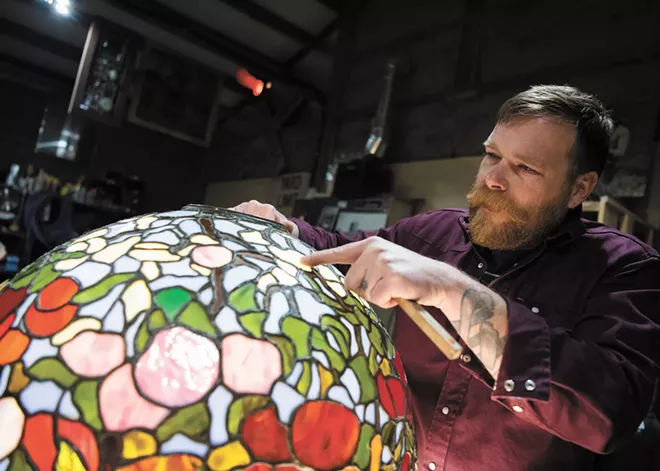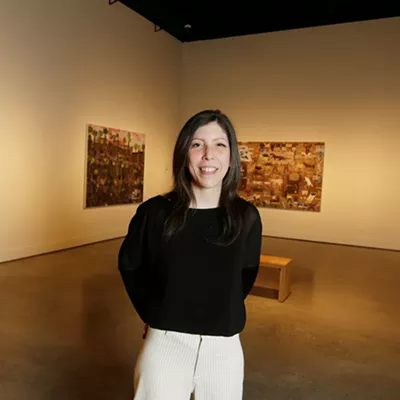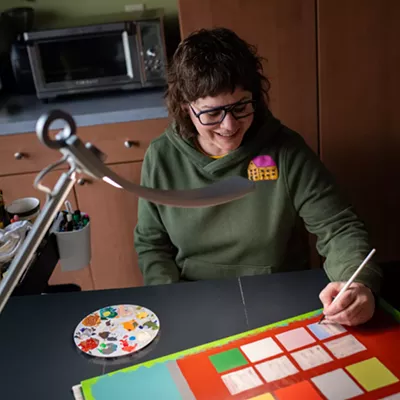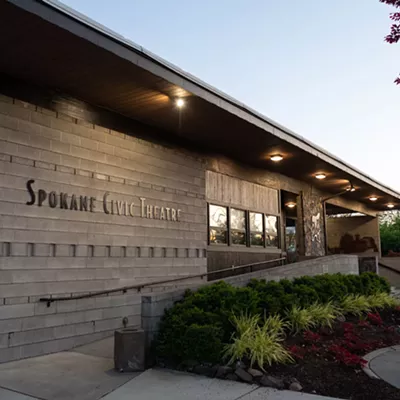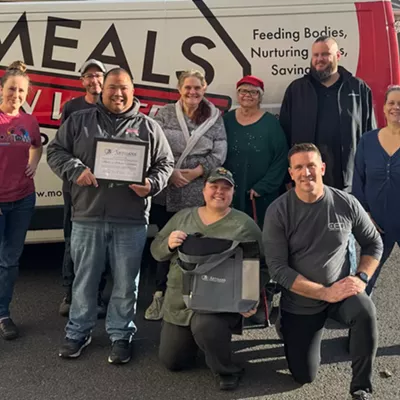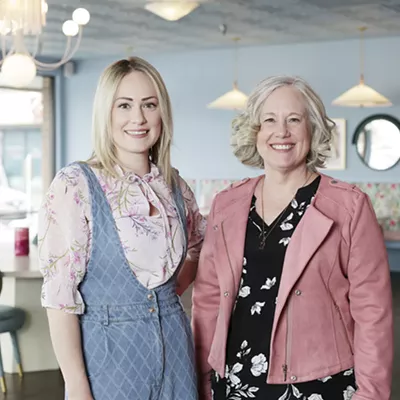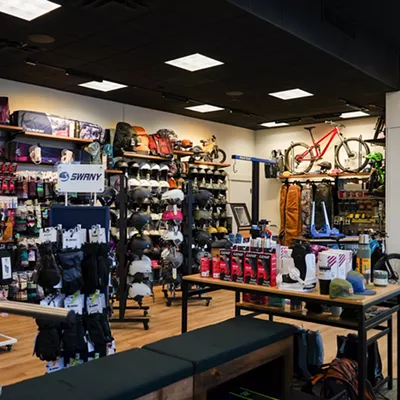Alex Brannin learned at a young age that the intricate and magical art of glasswork has few limitations.
He grew up around the craft with his father, Jerry, a self-taught working artist in Norfolk, Virginia, who showed Brannin all about glasswork.
"He always told me by the time I was able to walk, I was out handing him tools," Brannin says.
His father started American Art Glass in Norfolk in 1971, when he began salvaging and repairing things like fireplace mantels and stained glass windows.
"He taught himself how to repair those things, taught himself how to make stained glass and just got absolutely into glass," Brannin says. "It's something that just kind of swept him up and became life and became employment, and it's what I grew up in."
Brannin moved American Art Glass to Spokane in 2014, rebranding it last year as Spokane Stained Glass.
Brannin had taken a brief hiatus from glasswork, but that ended when he undertook a restoration project at the Hotel Indigo in 2019. His work at the Hotel Indigo, formerly the Otis Hotel, consisted of removing several leaded glass windows from the building and restoring them to their original state and adding extra support to ensure they'll last many more decades.
Leaded windows consist of decorative panes of glass with metal cames, which join pieces of glass together while creating a line between them. The term stained glass comes from silver stain, which adds a yellow shade to glass and was a common practice in the 1300s. In the time since, stained glass has morphed into a broader category defining a mosaic of colored glass.
Brannin enjoys unearthing the history of different buildings and glasswork while he's doing restoration work, as he did at St. David's Episcopal Church in north Spokane while repairing damage from a rock thrown into one of its stained glass windows.
While there, he discovered a window by Charles Jay Connick from 1929 hidden away in the building's foyer.
Connick was a prominent American painter and stained glass artist, and the window in St. David's was originally installed at Boston University. Sometime in the 1950s, Brannin says it made its way west and ended up in Spokane.
"I'm just a big preservationist, so when I see a piece of history that needs to be protected and kept up, I tend to kind of get on people's case a little bit about it," he says, adding that he built a backlit display box and a tempered glass cover for the window, which now is installed at the church's main entrance.
Another recent project involved restoring glass windows at Our Lady of Sorrows Church in Cusick, Washington, which was damaged by both BB gun pellets and rocks flying off the road when snowplows passed.
Brannin says the main challenge with this particular restoration was finding enough of the right glass to repair the windows. Many major glass manufacturers have closed over the past decade, but he eventually found what he needed. From there, he installed a protective cover over the restored panes to prevent further snowplow damage.
One of Brannin's favorite things about restoration work is stepping inside the original artist's world, examining the techniques they used and discovering ways to replicate it.
That's something he did while repairing an antique lamp for a customer, which required him to make shaped glass flower petals using a mold and heating it in his kiln in order to replace the damaged ones.
For certain repairs, Brannin has to completely disassemble a piece to fix and reform damaged glass. From there, he rebuilds it back to its original state using methods such as soldering, fusing, leading and foiling.
He also does commissions, such as a painted glass piece for an Air Force veteran who flew a KC-135 Stratotanker. To do so, he created a silk screen of the plane and printed the design onto a pane of glass, which was then fired in the kiln.
"We've used that in the past a lot of times, like in churches where people want to do dedication windows," says Brannin. "They'll have photographs of either the donor or passed loved ones, so we get good photos and put it right on the window."
SPOKANE STAINED GLASS
spokanestainedglass.com, 509-919-1017
Facebook: Spokane Stained Glass
Instagram: @spokanestainedglassllc
Brannin mentions that the United Kingdom recently added stained glass to the country's Red List of Endangered Crafts at risk of dying out in succeeding generations.
"Nobody's really willing to learn, a lot of people aren't willing to teach, so it's a craft that is sort of dying with a lot of people," he says.
But he's also anecdotally noticed revived interest in glassmaking, with people creating their own suncatchers or doing copper foil work and posting it on social media.
To ensure the craft is passed on, Brannin plans to offer classes in the coming months teaching people how to create simpler fused glass pieces, for which pieces of glass are cut and arranged to create a design. They're then heated in a kiln to melt and fuse together, producing a singular coherent piece. He also hopes to teach more intricate glasswork techniques in the future.
"Glass is an endless medium, you can do anything with it. It's magic stuff. It's hard to put it any other way." ♦

